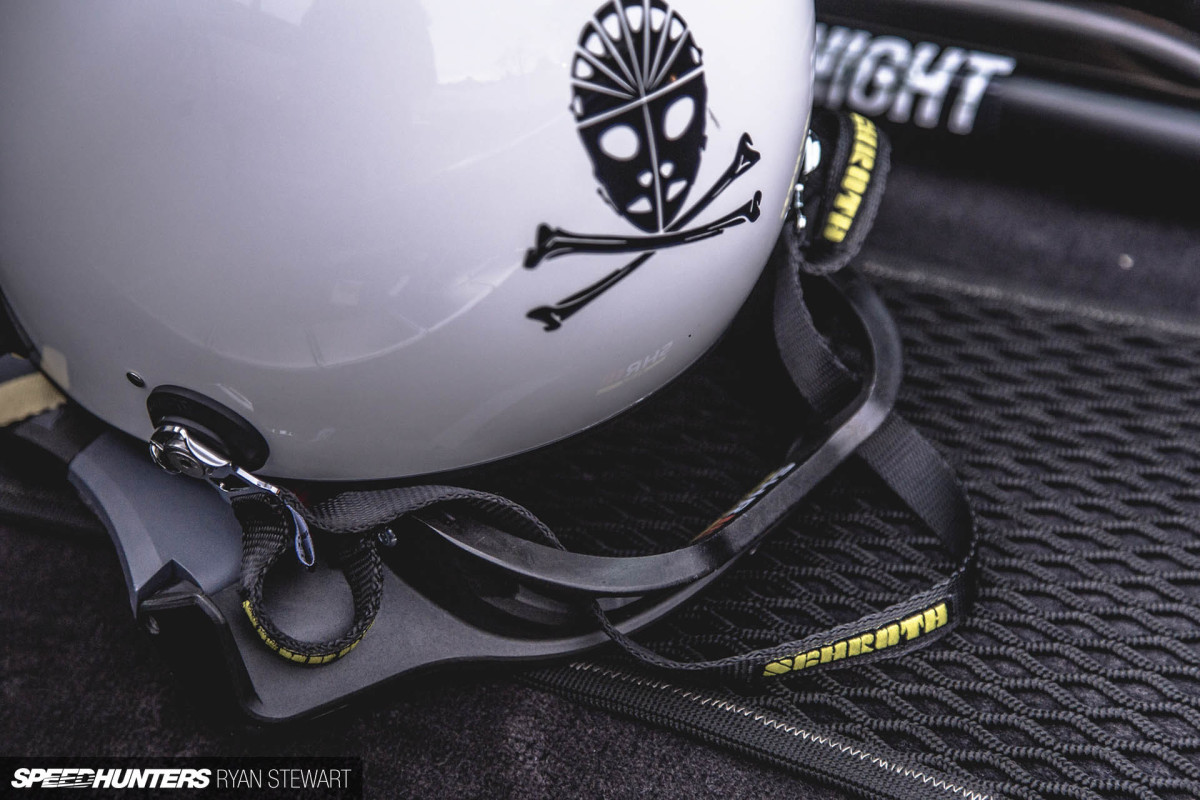
“I’m not a racing driver, I don’t need that.”
It’s true, you can get carried away with ‘safety equipment’. I put that in quotation marks because at track days all around the world you’ll find this one type of guy. He’s dressed head to toe in fire retardant gear. He has the suit, the gloves, and the ever-so-thinly-soled shoes so he can heel and toe to perfection, if only he knew how. The gear is usually in a colour that co-ordinates with his chosen track day steed, and to be honest it’s all in vain. The likelihood of his car exploding into flames is relatively low; it is of course possible but there’s usually a rather more important piece of gear he’s missing: a head restraint.
In crashes at speeds even as low as 30mph you can be generating forces large enough that the mass of your head and helmet literally try and pull your neck apart. It sounds dramatic, but I’m not joking. Check out this video of an altogether unspectacular crash:
What Happens In A Crash Situation?Whenever you hit something hard there is a very abrupt deceleration, and it’s this element of the crash that is dangerous. Sure, you are fixed in your seat, but your limbs and head are not, it’s just the central mass. Here’s what happens when you crash…
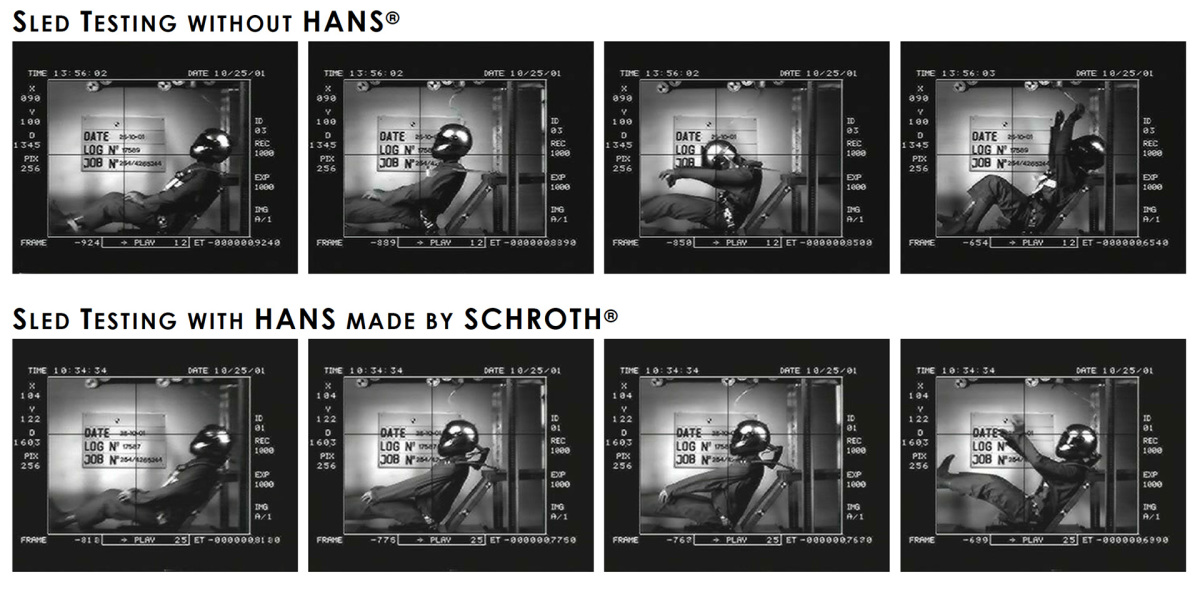
The pelvis moves forward and the shoulder belt angles reduce, which can result in submarining. The lap belt slides into the corner of the bucket seat openings and elongates to take some forces exerted on the body. The harness works to slow the rate of deceleration on the body. Without a frontal head restraint extreme head deceleration loads can cause spine stress and neck tension may occur causing basal skull and spinal fractures, resulting in severe injury or worse. Simply put, without your head tethered to your body it tries to continue its path forward and out the windscreen. It’s only the attachment at the base of the skull to the spine stopping that.
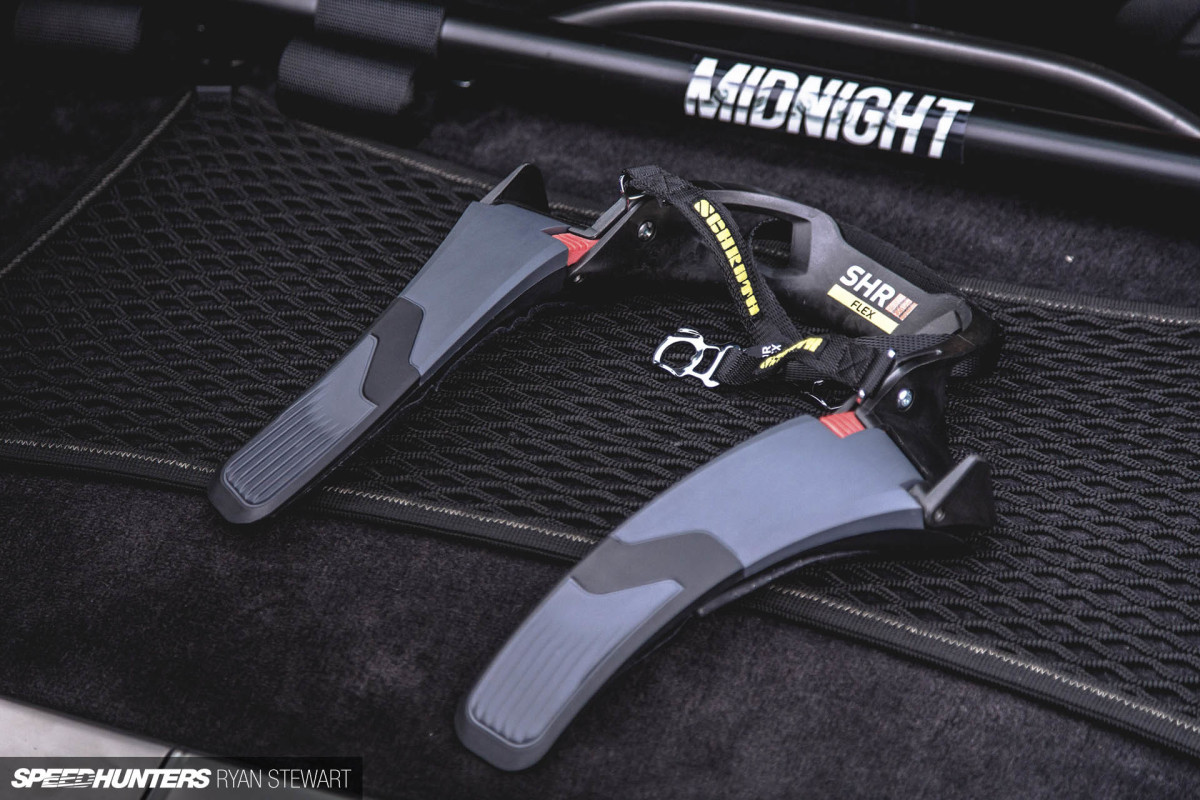
The most effective way to reduce the risk of head and neck injuries is to wear a frontal head and neck restraint (FHR). There’s a number of them out on the market and it can be tricky to decide with one to choose. Schroth has been pioneering head and neck restraint research and that’s why I’ve chosen the Schroth SHR-Flex.
How Head Restraints WorkAny head and neck restraint works in the same way for your head as a harness does for your body. The primary function is to slow the rate of deceleration of the head by anchoring it to the body via webbing or tethers that control the motion and forward loading. Traditional head and neck restraints are fixed collars that wedge between the body and harnesses to provide an anchor point. These have to be correct for the type of seating position (seat back angle) you have; a single seater will require a very different head and neck restraint to a saloon car as the relationship between the neck and body is different. This can be an inconvenience for people with more than one track or race car as often they will have to have more than one device.
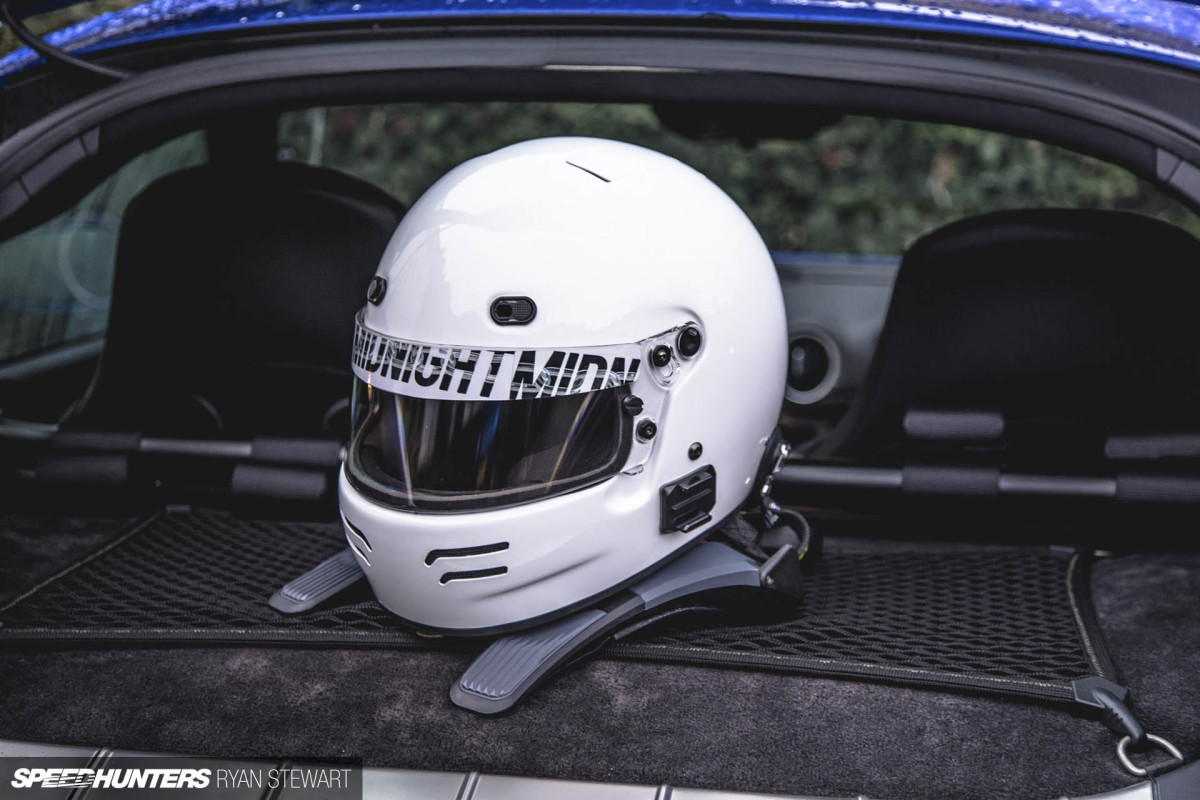
The SHR-Flex gets around this issue by having a flexible legs and an articulating collar that actually acts as a shock absorber too. Because of this, the SHR-Flex provides enhanced comfort, uniquely adapts naturally to different body types and seating positions, and is really really simple to use.
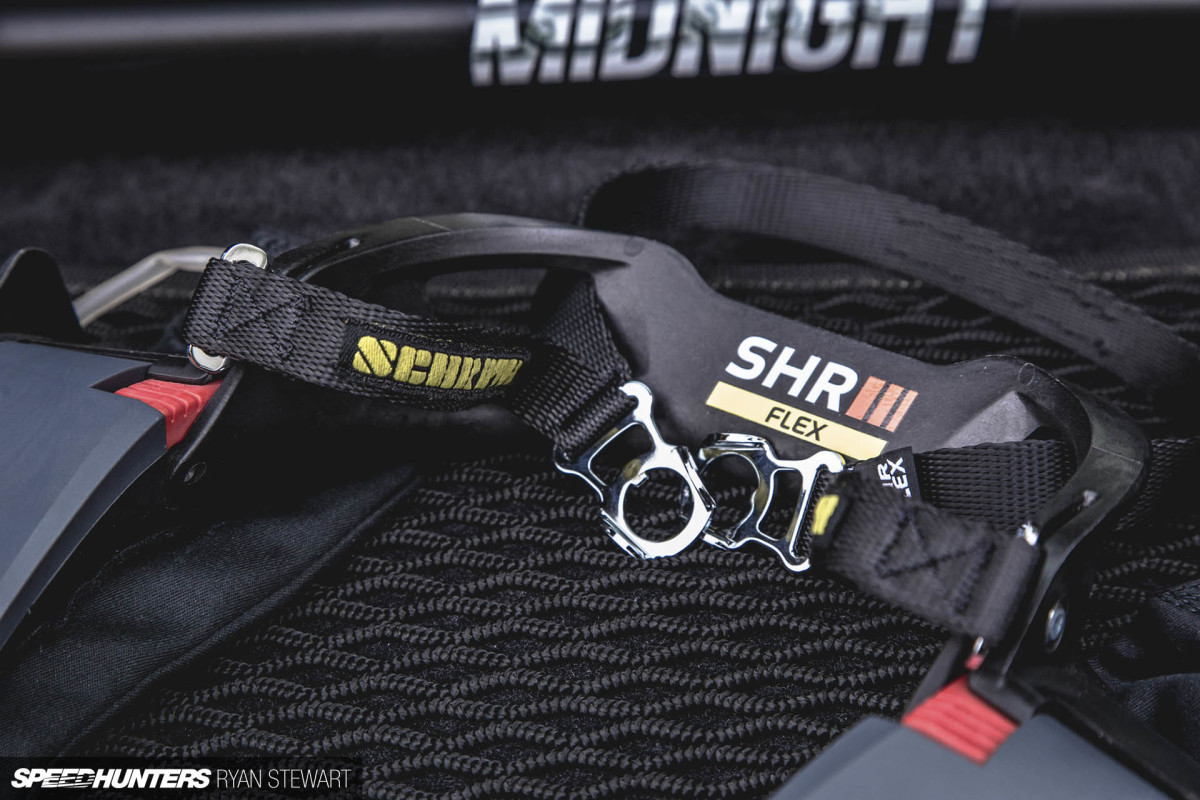
It used to be that driving with a head and neck restraint was an uncomfortable affair and head movement was severely restricted – great in a crash situation but not ideal for visibility on circuit. The low collar and adaptive legs of the SHR-Flex give much more freedom of movement than a normal head and neck restraint, and after a while you forget it’s fitted. The magic element here is that when the harness is loaded in a crash situation the legs lock against the main collar and take up this slack, meaning the SHR-Flex is able to restrict head movement like a conventional HANS. Pretty trick.
A Final ThoughtSchroth give some pretty startling numbers concerning the physics going on in a head-on collision.

During certification of the SHR-Flex product a dummy is seated in a frontal test sled and accelerated at 68G in order to generate the high neck forces typically found in a head-on crash.
If you think that an average human head weighs around 5kg and a helmet is around 1.5kg, when subjected to 68G this 6.5kg acts as 442kg. That’s getting on to almost half a US ton; no wonder basal skull fractures are a true threat to users in motorsport. Think about that next time you’re browsing for those blue boots and gloves…
Ryan Stewart
Instagram: 7.nth
ryan@speedhunters.com

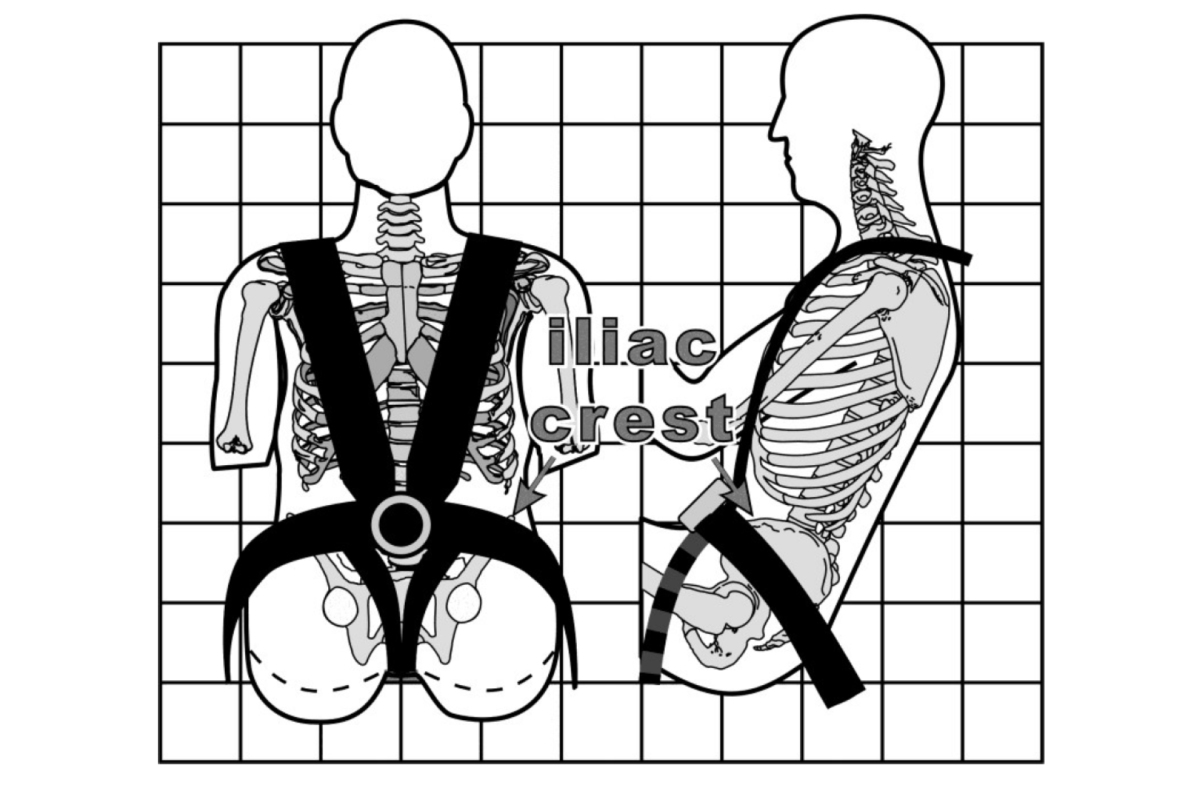
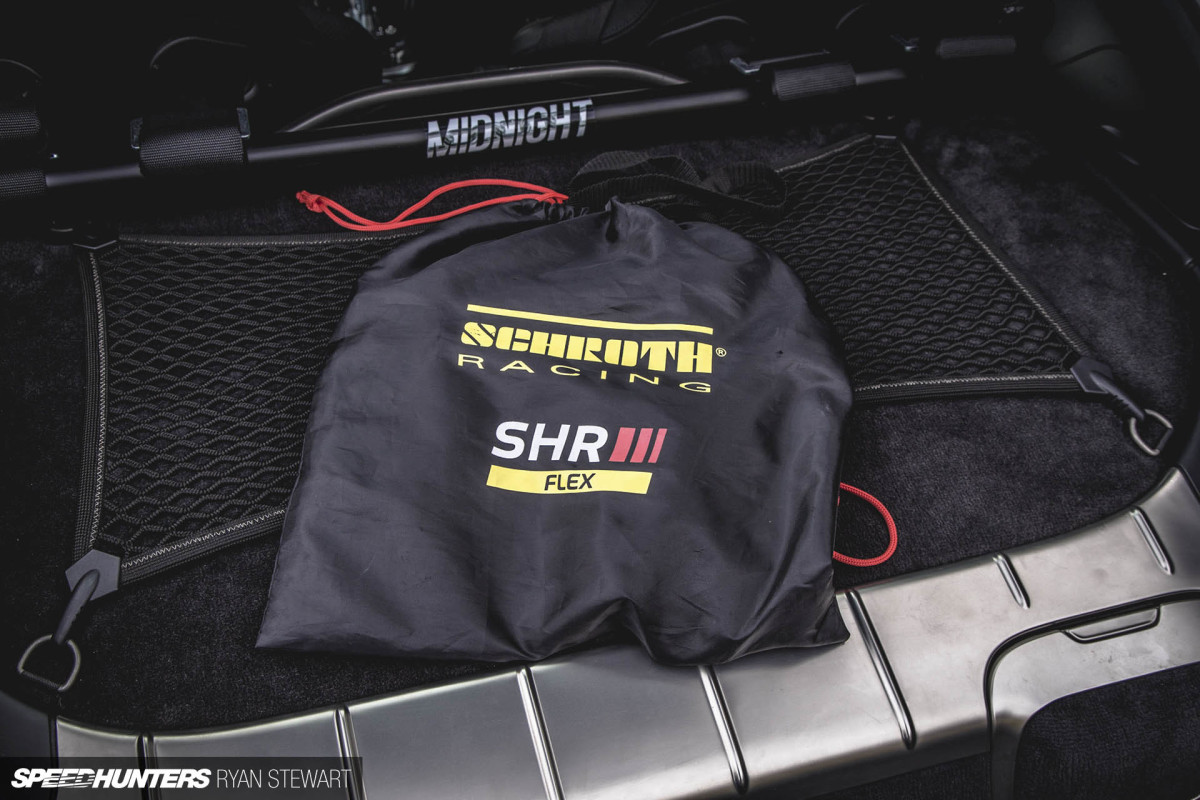

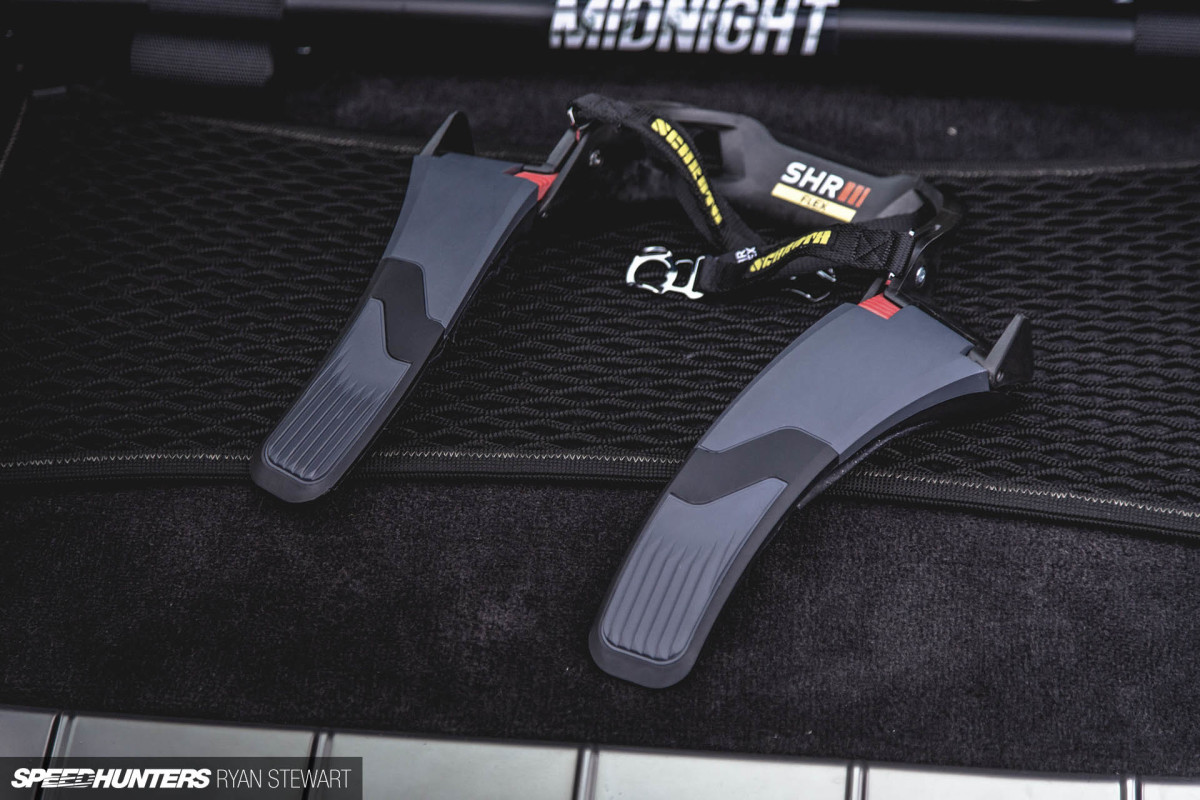
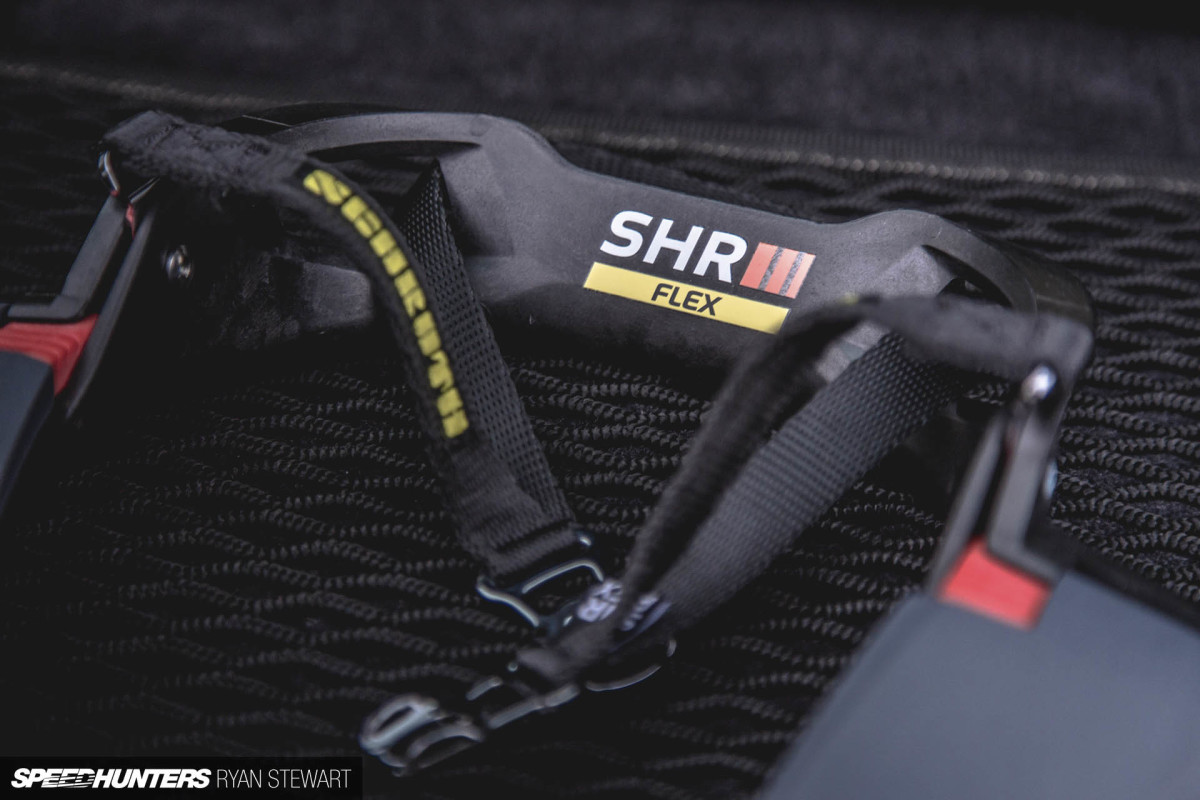
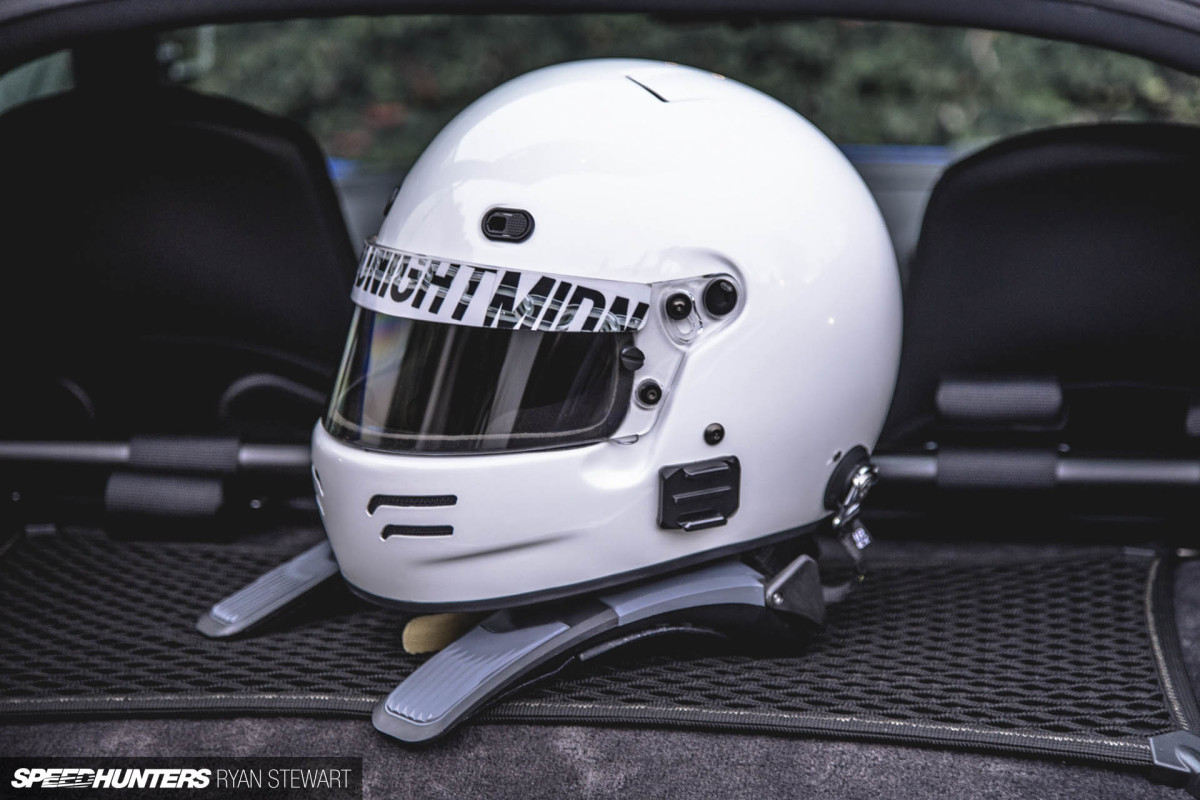
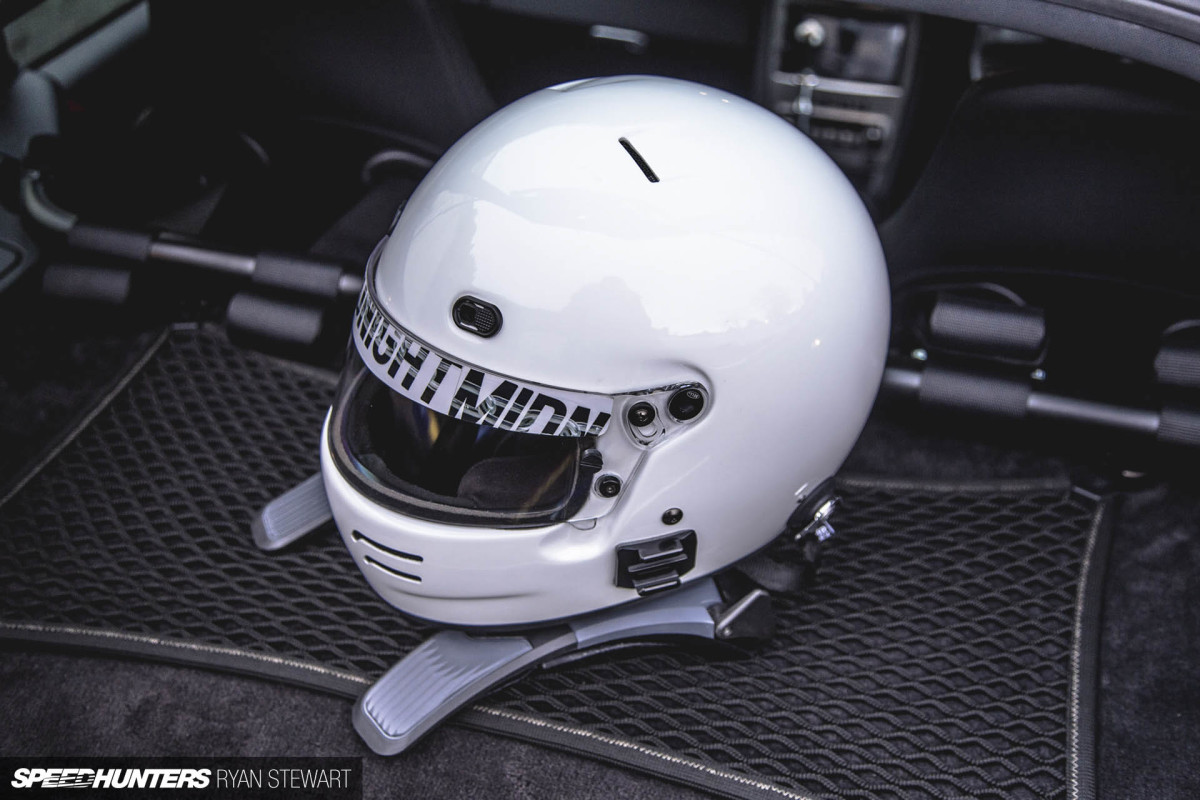
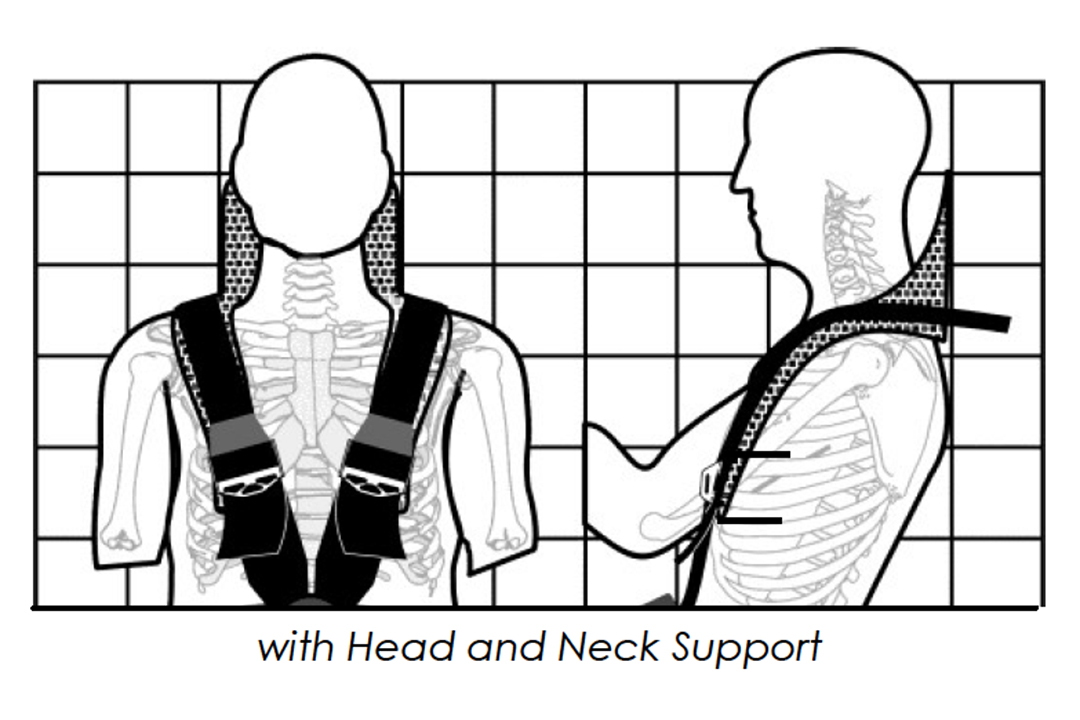






Nice read, FHR on my shopping list for Autosport show next weekend.
Schroth will be there at the show I believe, it’s good to see the devices in real life before purchasing as everyone has a different body shape. I went for the larger SHR-Flex, it’s really comfortable
Hopefully be able to try a couple on to make sure I get the right one, I've been looking at buying one for a while and I think its time to take the plunge.
Make sure you get the right size too, should just brush past the side of your neck with a little resistance as you push it on from behind.
I'l try a couple on from different suppliers before I buy one, make sure I get the best one for me and my budget
What if you only have a traditional 3 point seat belt? The test aboves have been conducted with a full harness so my question is would this system benefit you when using a 3 point belt or would the retention cause one side of your body to over rotate as only one side of the restraint is under a belt? I know the device will make a difference in general as they are recommended for karting but in this case no part of the device is under a belt.
You should investigate all of the different products, the one in this article is designed to work with 4,5 or 6 point restraint system and will not provide ANY protection in a 3 point belt as the forces will wrench the restraint from under the belt as your body moves forwards and slightly rotates. All neck restraints that are meant for racing applications rely on the forces between the belts and your upper body to wedge the collar in and hold it still even against the force of your head moving forward, If those forces are unevenly applied to one side the person wearing the saftey equipment will just yank the collar lose as they move against the seats.
For three point belts you should take a look at the collars that strap to your upper body, these will also be stiff (as they brace against your body to restrict your head movement) and usually a fixed angle. There are also karting neck brace systems that might be better to look at for a 3 point belt system
John Morton had a crash at Laguna Seca years ago in a Scarab F1 which is an open top older car with a roll bar. He decided not to wear a HANS and thinks it saved his life as when he flipped and rolled he was able to duck his head down. While HANS is great it always depends on application.
If he had been locked in with a HANS he would have died as the roll bar collapsed an inch or 2 under impact exposing his head. Also important to remember if you have a roll bar you should be wearing a helmet. Slapping your head into steel isn't a great way to stay healthy. Cheers!
I find stories like that frustrating, there's no way that in a roll and impact anyone has the neck strength to duck away or whatever he thinks he did. Thinking of the literally thousands of accidents that the driver walks away with only a bruised wallet, instead of several months recovery in hospital/physio, to give them equal press really does a disservice to the breakthrough that HANS etc has offered Motorsport..
For some reason the myth that you can duck in a rollover continues. You probably can't. When OEMs study rollovers they find many people bump their heads on the a pillar. If they could duck they would.
Great little informative post Ryan. The fact of the average head nearly weighing a ton in an extream head on is surprising. 1 slight admition I am "that guy" blue boots, gloves the lot.
I do a bit of co driving and one thing I noticed when I got my hans is that it was heaps easier to read notes as it restricted the range that your head was going to move. I would rather wear a hans over being a bobblehead any day!
Wear a neck restraint in my car with schroth 6pt harness, found it to be far more comfortable To wear it than to go with out
I am one of those that has the full gear for my weekend/track car. Sure, you might look like an idiot when you pull out the HANS device but I’d rather that than the alternative should anything happen on track. The only thing I found annoying the first time I used it was trying to buckle the harness as I couldn’t look down with the HANS thethers attached. So connect the tethers to your helmet after you buckle yourself in or get someone to help you!